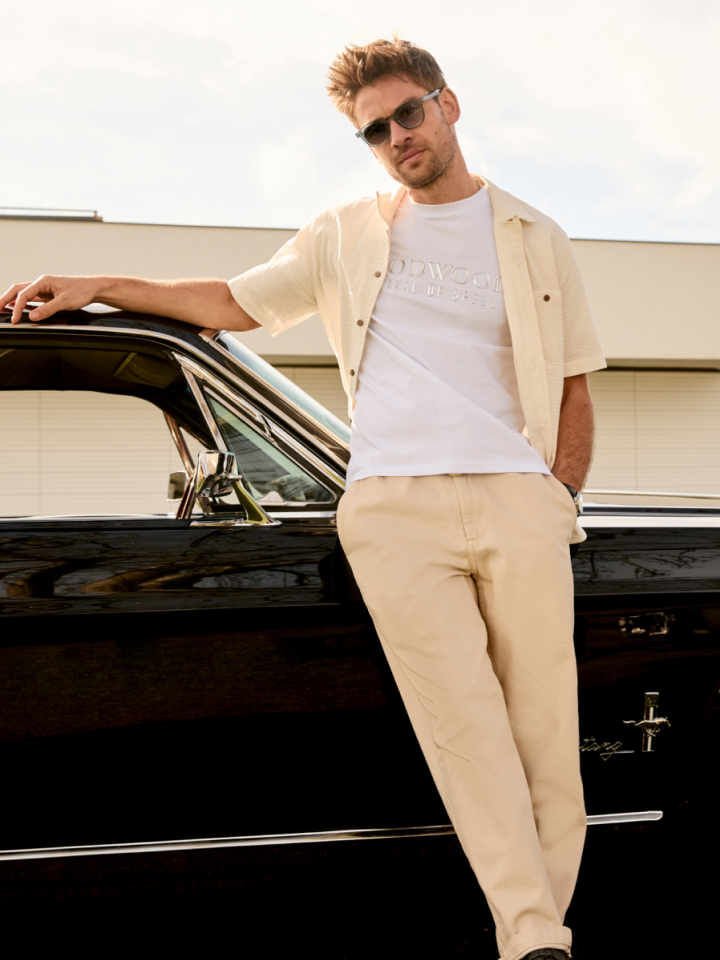What it’s like to drive a Goodwood 9 Hours winner | Thank Frankel it’s Friday
 Andrew Frankel
Andrew Frankel
I thought I’d pen a few words this week about the Aston Martin DB3 that will be the star lot of the Bonhams Revival sale tomorrow (presuming you’re reading this on the Friday when it is published). I know this site has already carried news of its consignment, so I’ll try not to cover the same sort of ground, but I do have a perspective that has not yet been provided: I’ve driven it.

More than that, I’ve also raced against it many times in cars that can be regarded as close competitors. And I think the first point I’d like to make is that it is a car more sinned against than sinning. Just for a start, it deserves to have some slack cut for it simply for it being Aston Martin’s first racing car, as in a car designed from scratch for no other purpose than to race. Nor did Aston Martin have the kind of power available for it to be competitive. Had it made its debut at Le Mans in 1951 as originally planned, its 2.6-litre engine would have been thoroughly outgunned no only by Jaguar’s more modern 3.4-litre motor, but also Ferrari’s 4.1-litre V12.
It was, of course, the first Aston Martin racing car to win an internationally recognised, top drawer sportscar race when it claimed victory in the inaugural Goodwood Nine Hours, and while it didn’t win much else, it should be remembered that before then at Silverstone three DB3s were entered into the sub-3.0-litre class and came first, second and third, translating to second, third and fourth outright.

The car being sold is chassis five out of ten, the last works car and the winner of that Nine Hours race. And although not currently installed in the car, the winning engine is included as part of the lot.
When I drove it, what I wanted to understand most was how it won that race. Because on paper, up against three works C-type Jaguars, it didn’t stand a chance. Now, you can look at the results and conclude the only reason was because two of the Jaguars retired and the third lost 16 laps having its rear suspension repaired. But look a little more closely at the race itself and you’ll see that just one hour in, one of the DB3s was leading on pure merit, another in third place. How so when Jaguar had the likes of Stirling Moss, Tony Rolt and Duncan Hamilton on the driving roster? The answer is very simple: it was raining.

A wet track severely limited the Jaguar’s ability to deploy its clearly superior power even if, by now, the Astons had 3.0-litre engines. By contrast, the DB3s, with De Dion rear suspension which was clearly superior to the Jag’s live rear axle, were in their element. Yes it was still a fortunate win because the weather cleared up and the Jaguars took the lead again, only to relinquish it late on through mechanical frailties, but it showed that it was a paucity of power alone that prevented the DB3 being as quick as anything else out there.
Today that is less of a problem. Like almost all historic cars, its race engine now gives far more power than it did in period and I can remember watching in dismay from the cockpit of a Ferrari 750 Monza as this very car pulled away from me at a number of historic race meetings. Likewise at Monaco the DB3 had more than the legs of ‘my’ entirely factory-standard C-type, at least down the straights which, fortunately for me, are neither long nor common.

What I discovered when I drove it is that it is an uncommonly fine handling car for the era, more playful on the limit than a C-type and lacking entirely the Ferrari’s desire to mug you at the earliest opportunity. It must have been very frustrating in period for a young hotshot like Peter Collins to be crawling all over the opposition in the corners, only to see it disappear down the straights.
The DB3 did have quite a vintage feel, with its wide and open cockpit and tiny Smiths instruments, but it was so much better to drive than expected and you can see how it was developed into the far more successful DB3S, which was a bit lighter, a bit more slippery and a bit more powerful. A bit better, then, in every respect.
But as the car that set Aston Martin on the path to its eventual victory at Le Mans and securing the World Championship at Goodwood in 1959, its importance would be hard to overestimate. And as a car with a great history now fully competitive in the right kind of historic motor race, it would make a fantastic addition to any serious racing stable.
Images courtesy of Motorsport Images and Bonhams. Goodwood photography by Jordan Butters and Drew Gibson.
Aston Martin
DB3
Goodwood 9 Hours
Bonhams
Revival
Revival 2022
Thank Frankel it's Friday





